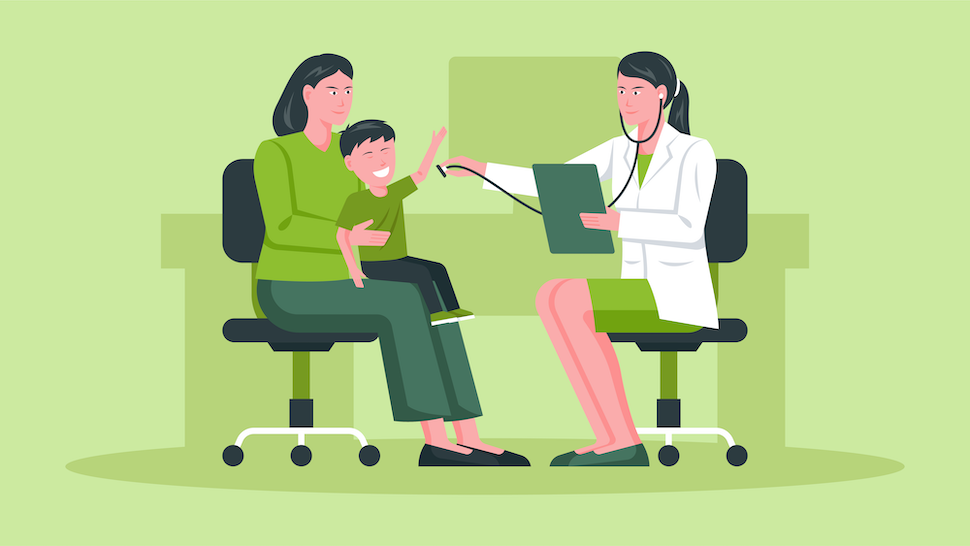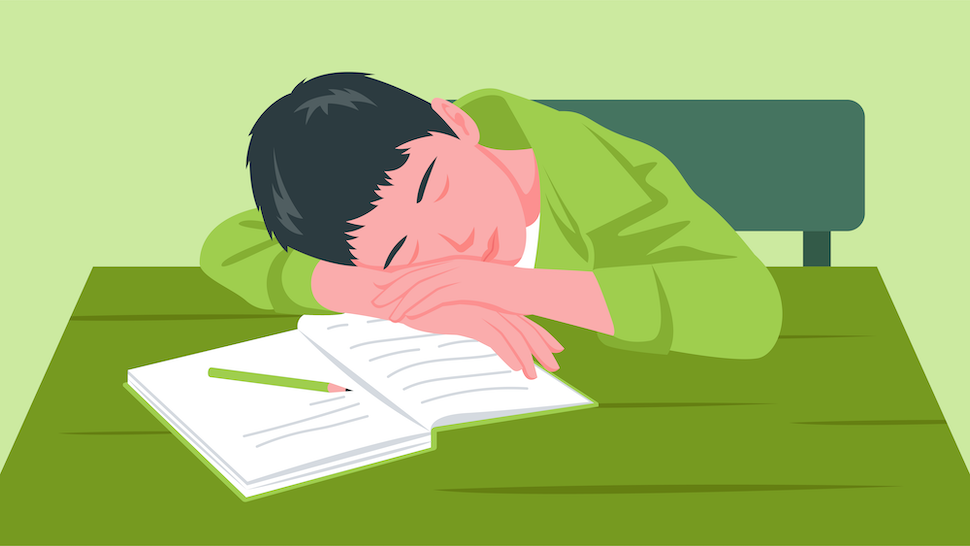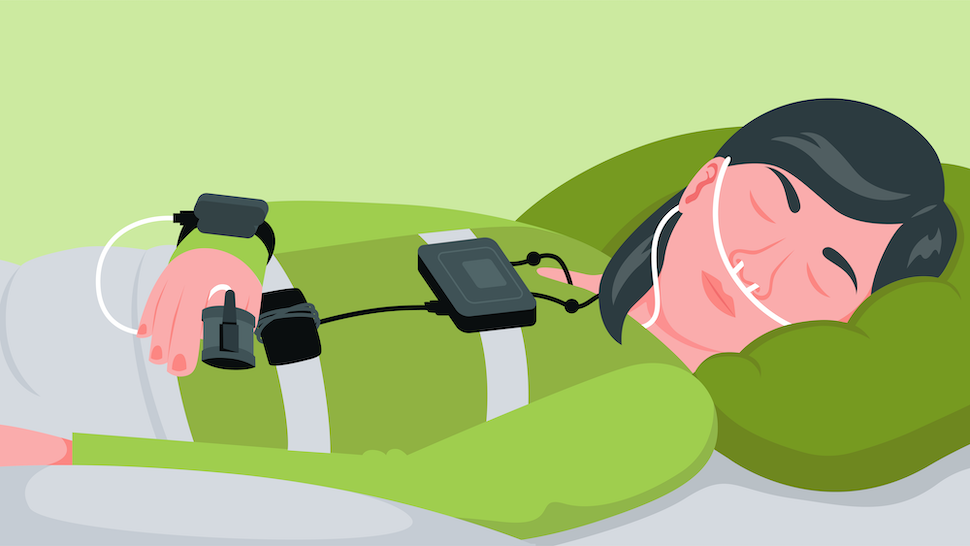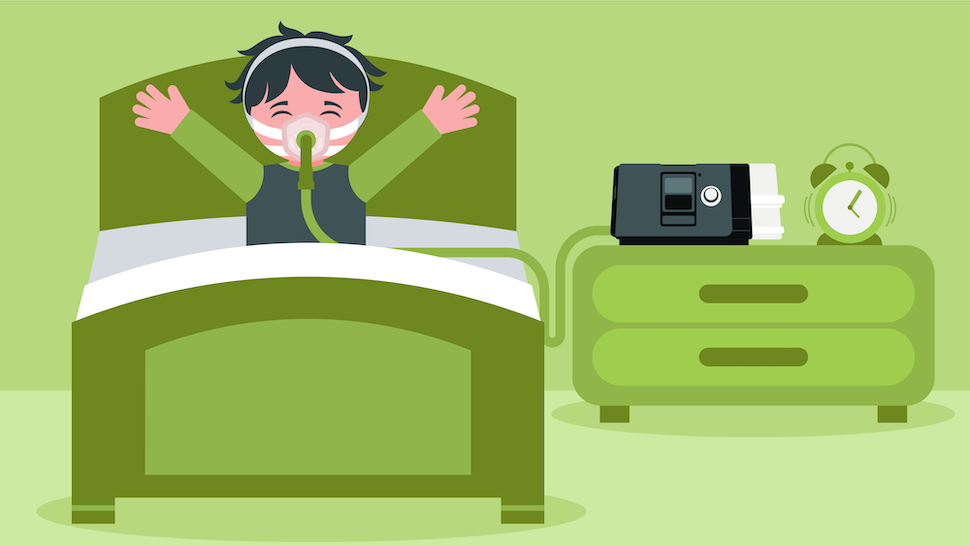While sleep apnea in children and teens is similar to adult sleep apnea, there are important differences you should know
Sleep apnea is an increasingly common issue for adults around the world. However, it’s also a concern for kids and teens as well.
Healthline notes, “Between 7 and 11 percent of children have a nighttime breathing disorder, whether it’s sleep apnea, snoring, or something else. Around 90 percent of them may be undiagnosed.”

If you suspect that a teen or child you know might have sleep apnea, this guide can help you assess their condition and determine whether seeking professional assistance might help.
We’ll start with a brief overview of sleep apnea before exploring pediatric sleep apnea symptoms, the diagnosis process, and standard treatment options.
Let’s get started!
What is Sleep Apnea
While there are multiple types of sleep apnea, obstructive sleep apnea (OSA) is the most common form seen in children and teens.
With OSA, the upper airway becomes partially or entirely blocked during sleep, restricting or briefly halting breathing altogether.
This is identical to adult sleep apnea on the surface. Still, some subtle details can separate the adult and pediatric sleep apnea cases–and make cases in children trickier to diagnose.

For example, in adults, OSA is often caused by obesity. However, according to Mayo Clinic, the most common cause of pediatric OSA is enlarged adenoids and tonsils–though weight can also play a role.
Other risk factors include:
- An enlarged tongue
- Cerebral palsy
- Down syndrome
- Face or skull abnormalities
- Family history of obstructive sleep apnea
- Low birth weight
- Neuromuscular disease
- Sickle cell disease
These differences in common risk factors mean that it’s easy for parents and doctors to sometimes overlook pediatric sleep apnea.
Related Guide: Demystifying Sleep Apnea
Symptoms of Pediatric Sleep Apnea
Primary symptoms and indicators of sleep apnea in children are similar to those of adult OSA. These include:
- Bad dreams or nightmares
- Bed-wetting
- Morning headaches
- Mouth breathing
- Night sweats
- Pauses in breathing
- Restless sleep
- Sleeping in odd positions
- Sleep talking
- Sleepwalking
- Snoring
- Snorting, coughing, or choking
However, since children often sleep alone or in separate beds from their siblings, these symptoms might go unnoticed unless a parent or sibling happens to pay attention at just the right time.
You might also attribute nightmares, bedwetting, or restless sleep to any number of other factors without considering kids’ sleep apnea.

But pediatric sleep apnea often causes daytime symptoms as well. If you notice any of these symptoms below in conjunction with symptoms above, consulting with your child’s primary care provider or your family doctor is recommended.
Daytime symptoms of pediatric OSA include:
- Behavioural changes or outbursts
- Daytime drowsiness
- Difficulty paying attention
- Hyperactivity and restlessness
- Learning difficulties
- Poor weight gain or unexplained fluctuations in weight
- Unexplained reduced school performance
Failure to treat the condition could result in a failure to thrive and develop compared to peers, increased risk of cardiovascular health issues, and death in extreme cases.
As such, it is critical to speak with a medical professional if you suspect your child might be experiencing pediatric OSA symptoms.
Diagnosing Sleep Apnea in Children
Diagnosing pediatric sleep apnea is very similar to diagnosing adult OSA in most cases. After speaking to your family doctor or pediatrician, they might recommend an at-home or lab-based sleep study.

These studies gather information related to breathing patterns, blood oxygen levels, heart rates, and other factors which could indicate sleep apnea.
At-home tests are less invasive than lab-based tests. However, they don’t gather as much data. So depending on the symptoms experienced and the severity of your child’s sleep apnea symptoms, doctors might request one or both studies to confirm their diagnosis and inform their recommended treatment.
Treating Pediatric Sleep Apnea
For very mild cases, doctors might recommend nasal sprays or other medications and continue to monitor progression. They might also recommend lifestyle changes–including optimizing diet and exercise.
Should the doctor suspect that enlarged adenoids or tonsils are to blame, they might refer you to an ear, nose, and throat (ENT) specialist for further evaluation. This could lead to the removal of the tonsils (tonsillectomy), removal of the adenoids (adenoidectomy), or both (adenotonsillectomy.)
While no parent wants to see their child go through an in-patient surgery, these procedures typically feature rapid recovery times and minimal risks of adverse events. Especially when compared to the long-term effects of pediatric OSA.
However, your pediatrician or sleep specialist will recommend PAP therapy in some cases. If this is the case, your child might require an additional sleep study to determine the optimal pressure settings and PAP therapy type to address your child’s symptoms.
PAP therapy uses air pressure to ensure that airways remain open and eliminate apnea episodes while your child sleeps.
This is done using a CPAP machine that controls the pressure very precisely.
The air flows through a hose to a mask your child will wear on their face. The exact mask fit will depend on the type of CPAP mask recommended for your child.
Modern CPAP machines are relatively quiet, and CPAP masks are comfortable with proper adjustment. While no CPAP setup is likely to be as comfortable as sleeping without one, reducing OSA symptoms is often swift and well worth any adjustment period your child might experience.

PAP therapy will be implemented alongside lifestyle changes in many cases, especially if the apnea is aggravated by obesity. With the right approach, this could lead to a reduced need for PAP therapy over time and the eventual end of PAP therapy altogether.
Summary
- Pediatric sleep apnea might be more common than you think. Worse still, it often goes undiagnosed.
- As with adult sleep apnea, the most common type of pediatric sleep apnea is obstructive sleep apnea.
- According to Mayo Clinic, pediatric sleep apnea is most commonly caused by enlarged adenoids or tonsils, unlike adult sleep apnea.
- Other risk factors include an enlarged tongue, cerebral palsy, Down syndrome, face or skull abnormalities, a family history of obstructive sleep apnea, low birth weight, neuromuscular disease, and sickle cell disease.
- Nighttime symptoms of pediatric sleep apnea include bad dreams, bed-wetting, mouth breathing, night sweats, pauses in breathing, odd sleep positions, sleep talking, sleepwalking, snoring, snorting, coughing, or choking.
- Daytime sleep apnea symptoms in children include behavioural changes or outbursts, daytime drowsiness, difficulty paying attention, hyperactivity and restlessness, learning difficulties, morning headache, poor weight gain or unexplained fluctuations in weight, and unexplained reduced school performance.
- Untreated kids’ sleep apnea can result in failure to thrive or develop, increased risk of heart health issues, and, in severe cases, death.
- Diagnosing pediatric sleep apnea typically requires an at-home or lab-based sleep study.
- Common treatments for sleep apnea in children include nasal sprays, lifestyle changes, tonsillectomy, adenoidectomy, adenotonsillectomy, or PAP therapy.
CPAP Supply is Canada’s leading online CPAP store for customer satisfaction. If your child needs dependable CPAP equipment, our selection of CPAP machines, CPAP masks, and other CPAP accessories from leading manufacturers can help you obtain everything you need to get started or keep your child’s existing equipment running smoothly. Browse our selection or contact us today to learn more about your options!
References
- Mayo Clinic: Pediatric Obstructive Sleep Apnea
- Nemours KidsHealth: Obstructive Sleep Apnea
- Cedars-Sinai: Obstructive Sleep Apnea in Children
- Healthline: Sleep Apnea in Children: What You Need to Know
- Children’s Hospital of Philadelphia: Obstructive Sleep Apnea
- Cleveland Clinic: Obstructive Sleep Apnea in Children
- YaleMedicine: Pediatric Obstructive Sleep Apnea
- Sleep Foundation: Children and Sleep Apnea
- The American Heart Association: Obstructive Sleep Apnea Is Common in Kids and May Impact Blood Pressure, Heart Health
- WebMD: Could Your Child Have Sleep Apnea?
- The American Sleep Apnea Association: Children’s Sleep Apnea
- Verywell Health: 10 Surprising Signs of Sleep Apnea in Children
